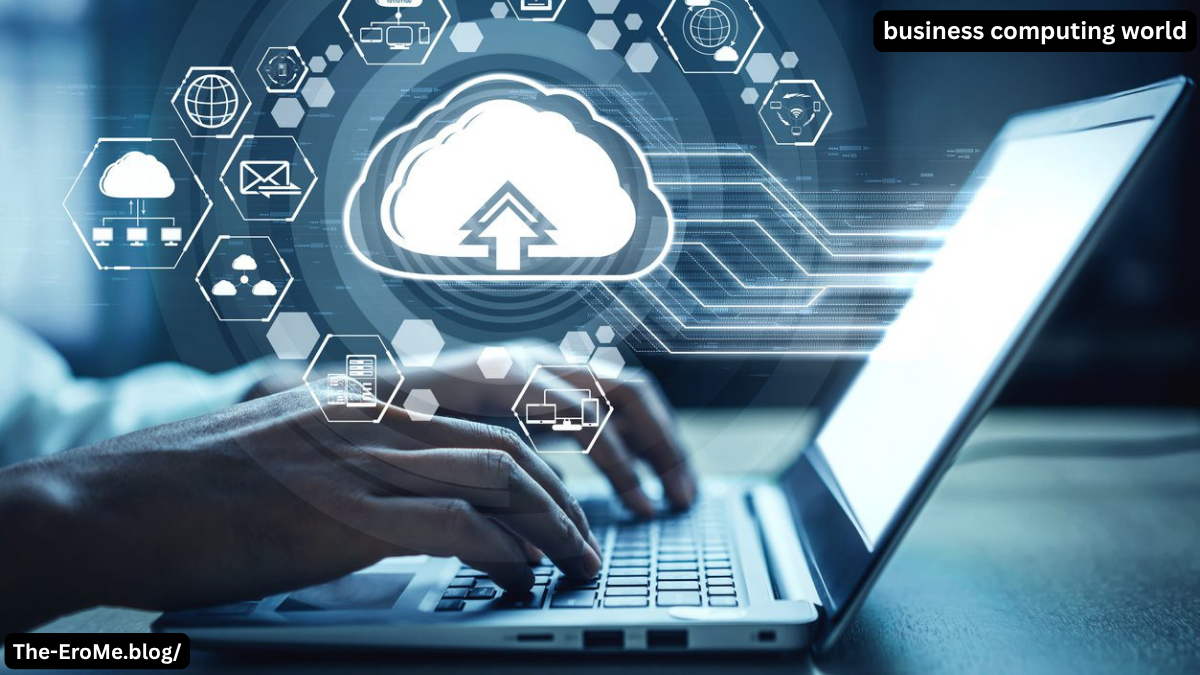Introduction: Welcome to the Business Computing World
The world of business computing world has dramatically transformed in recent years. What was once a niche corner of IT is now the backbone of modern enterprises. From cloud platforms to AI-powered decision-making, today’s businesses rely on technology not just to survive—but to thrive.
Business computing refers to the use of computing technology in corporate environments to streamline operations, enhance productivity, improve decision-making, and secure sensitive data. It’s an ever-evolving space filled with new tools, strategies, and challenges. If you’ve ever wondered how businesses stay competitive in a digital-first world, the answer almost always involves intelligent computing solutions.
Whether you’re a tech enthusiast, a small business computing world owner, or a CIO of a growing enterprise, understanding the nuances of business computing is vital. Let’s explore how this dynamic field is shaping industries and redefining success.
1. Evolution of business computing world: From Mainframes to Microservices
In the early days, business computing world computing was all about massive mainframes tucked away in climate-controlled rooms. These giants powered banks, governments, and corporations, handling massive calculations and storing vast amounts of data.
Then came the PC revolution, bringing computing power to the desks of everyday employees. Suddenly, spreadsheet programs and email transformed the way businesses communicated and managed data. The 1990s introduced networks, which eventually evolved into the internet—a game-changer that connected the world in real time.
Today, we’re in the era of cloud computing, containerization, and microservices. Companies now deploy scalable apps in the cloud, automate workflows with machine learning, and process data in real time. Business computing has moved from hardware-focused systems to flexible, software-driven ecosystems that enable agility and innovation.
2. Key Components of Modern Business Computing
Modern business computing is built on a few foundational pillars: hardware, software, networking, and data. Each of these components plays a role in the success of business operations.
On the hardware side, businesses still rely on servers, workstations, and mobile devices. However, cloud platforms have reduced dependency on physical infrastructure. Virtual machines, edge computing, and Internet of Things (IoT) devices are becoming increasingly prominent.
Software is where the real magic happens. Enterprise Resource Planning (ERP) systems, Customer Relationship Management (CRM) platforms, and Business Intelligence (BI) tools help businesses automate tasks, manage relationships, and gain insight from data. Combined with secure networking technologies and sophisticated data analytics, these systems drive efficiency and innovation.
3. Cloud Computing: The Backbone of Business Scalability
Cloud computing has revolutionized business IT by offering scalable, on-demand access to computing resources. No longer do businesses need to invest in expensive infrastructure. Instead, they rent what they need, when they need it.
Cloud platforms like AWS, Microsoft Azure, and Google Cloud Platform offer Infrastructure as a Service (IaaS), Platform as a Service (PaaS), and Software as a Service (SaaS). These services support everything from simple web hosting to complex AI workloads.
For small businesses, cloud computing levels the playing field. For enterprises, it means global reach and enhanced agility. However, cloud migration isn’t without its challenges. It requires planning, governance, and ongoing cost management. The benefits, though—flexibility, cost savings, and rapid deployment—are often worth the effort.
4. Cybersecurity in the Business Computing World
With great computing power comes great vulnerability. As businesses rely more heavily on digital infrastructure, they become attractive targets for cybercriminals. Protecting data and systems is now a top priority.
Cybersecurity in business computing includes firewalls, encryption, multi-factor authentication (MFA), endpoint protection, and security operations centers (SOCs). However, tools alone aren’t enough. Security awareness training for employees is crucial, as human error remains a leading cause of data breaches.
Regulatory compliance is another factor. Businesses must adhere to laws like GDPR, HIPAA, or CCPA, depending on their industry and region. Failure to comply not only leads to fines but also damages customer trust. Cyber resilience—being prepared to detect, respond to, and recover from attacks—is the name of the game.
5. Artificial Intelligence and Machine Learning in Business Computing
Artificial Intelligence (AI) and Machine Learning (ML) are no longer futuristic buzzwords. They’re practical tools embedded in everyday business applications. AI helps businesses make smarter decisions, automate repetitive tasks, and personalize customer experiences.
Think of AI-driven chatbots that handle customer queries 24/7, or ML algorithms that detect fraud in banking systems. In manufacturing, AI predicts equipment failures before they happen. In retail, it recommends products based on user behavior.

However, implementing AI requires quality data, ethical considerations, and transparency. The business computing world is working to balance innovation with responsible use of AI. Done right, AI becomes a transformative force that can propel a business into new levels of efficiency and insight.
6. The Role of Business Intelligence and Analytics
Data is the new oil—but it’s useless without refining. Business Intelligence (BI) tools like Power BI, Tableau, and Looker help companies turn raw data into actionable insights.
BI systems collect, analyze, and visualize data from various sources, providing dashboards and reports that support informed decision-making. Whether it’s tracking sales performance or forecasting inventory needs, BI empowers companies to respond quickly to changes.
The next frontier is predictive analytics and prescriptive analytics. These use AI to forecast future trends and suggest optimal actions. The ability to anticipate market shifts or customer behavior gives businesses a crucial edge in today’s competitive landscape.
7. Remote Work and Virtual Collaboration Tools
The COVID-19 pandemic accelerated the adoption of remote work tools, and there’s no turning back. Today, business computing must support hybrid and remote teams without compromising productivity or security.
Platforms like Zoom, Microsoft Teams, and Slack have become essential for communication. Cloud-based project management tools like Asana, Trello, and Monday.com enable collaboration across time zones.
For IT departments, this shift requires new strategies: remote device management, secure VPNs, and user support at scale. Meanwhile, leaders must rethink company culture and employee engagement in a distributed work environment. Business computing is central to making it all work seamlessly.
8. Emerging Trends Shaping Business Computing
Technology never stands still. Several emerging trends are poised to reshape the business computing world in the coming years.
Edge computing, for instance, processes data closer to the source, reducing latency and bandwidth use. It’s especially relevant for IoT devices in industries like logistics or healthcare. Blockchain technology is another disruptor, offering secure, decentralized data transactions.
There’s also a growing emphasis on green computing and sustainability. Data centers consume massive energy, and companies are under pressure to reduce their carbon footprint. Innovations like energy-efficient hardware and AI-optimized workloads are helping mitigate environmental impact.
9. Business Computing for Small and Medium Enterprises (SMEs)
SMEs often face unique challenges when adopting business computing solutions. Budget constraints, lack of in-house IT staff, and scalability concerns can hinder digital transformation. Fortunately, modern solutions are more accessible than ever.
Cloud services offer affordable entry points, and many SaaS tools are designed with SMEs in mind. From online accounting software to CRM platforms tailored for small teams, technology is enabling SMEs to punch above their weight.
The key is strategic investment. SMEs should assess their goals, prioritize scalable tools, and focus on security from the start. By embracing business computing, they can compete with larger enterprises more effectively.
10. The Future of Business Computing: What’s Next?
The future of business computing is exciting—and a bit unpredictable. Quantum computing, though still in early stages, could one day revolutionize encryption, logistics, and complex modeling. Augmented reality (AR) and virtual reality (VR) are gaining traction in training, marketing, and product design.
Meanwhile, the lines between consumer and business tech continue to blur. Employees expect the same ease of use and mobility they enjoy on personal devices. This user-centric approach is reshaping enterprise software design.
Ultimately, business computing will continue to evolve as a driver of innovation, efficiency, and growth. Companies that adapt quickly, embrace lifelong learning, and stay agile will lead the way in this ever-changing landscape.
FAQs: Business Computing World
1. What is business computing, and why is it important? Business computing refers to the use of technology to manage and optimize business operations. It’s important because it enables efficiency, data-driven decision-making, and competitive advantage.
2. How can small businesses benefit from business computing? Small businesses can use business computing tools to automate tasks, reduce costs, reach more customers, and analyze performance. Cloud services and SaaS platforms make it accessible even on tight budgets.
3. What are the biggest cybersecurity risks in business computing? Common risks include phishing attacks, data breaches, ransomware, and insider threats. Businesses should implement layered security, employee training, and incident response plans.
4. Is AI replacing human jobs in business computing? AI is transforming jobs by automating routine tasks, but it’s also creating new roles. The focus is shifting toward human collaboration, where machines handle the repetitive work, and people focus on strategy and creativity.




